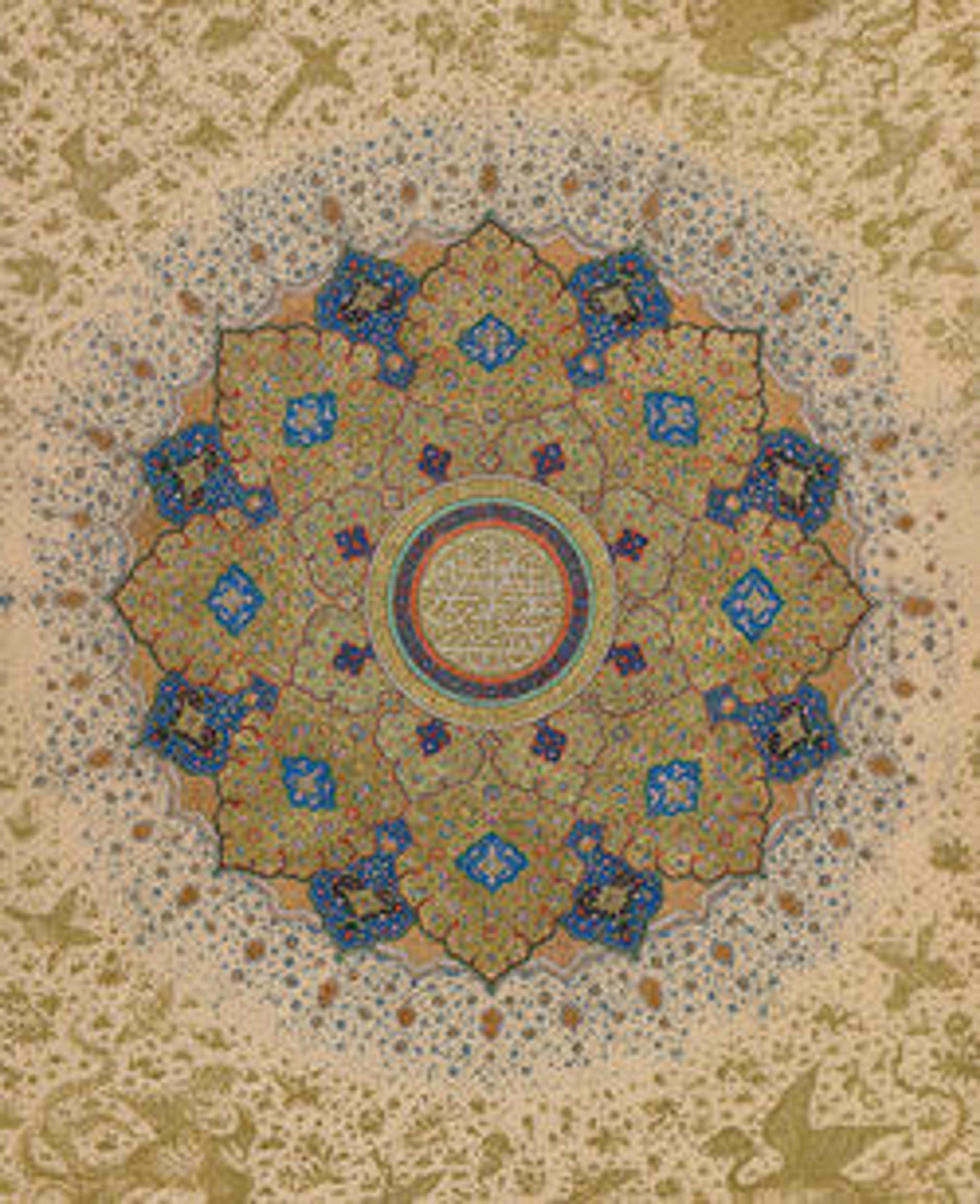Panel
The most complete surviving example of its kind, this panel most likely comes from a side of a cenotaph. It shows clear similarities to the carved decoration of a group of panels found at the 'Ain al‑Sira cemetery in Egypt. It incorporates decorative elements from both the Late Antique and Sasanian traditions. The geometric motifs derive directly from Roman mosaics, whereas the winglike designs in the arch spandrels are of Sasanian derivation.
Artwork Details
- Title:Panel
- Date:second half 8th century
- Geography:Attributed to probably Egypt
- Medium:Wood (fig); mosaic with bone and four different types of wood
- Dimensions:H. 18 3/4 in. (47.6 cm)
W. 76 1/2 in. (194.3 cm)
Wt. 97 lbs (44 kg)
Mount:
H. 24 1/2 in. (62.2 cm)
W. 80 1/2 in. (204.5 cm)
D. 6 in. (15.2 cm)
Wt. 97 lbs. (44 kg) with mount and plexi - Classification:Wood
- Credit Line:Samuel D. Lee Fund, 1937
- Object Number:37.103
- Curatorial Department: Islamic Art
Audio
- Panel from a Cenotaph or Symbolic Coffin with Marquetry
decoration
0:00
0:00
We're sorry, the transcript for this audio track is not available at this time. Please email info@metmuseum.org to request a transcript for this track.
More Artwork
Research Resources
The Met provides unparalleled resources for research and welcomes an international community of students and scholars. The Met's Open Access API is where creators and researchers can connect to the The Met collection. Open Access data and public domain images are available for unrestricted commercial and noncommercial use without permission or fee.
To request images under copyright and other restrictions, please use this Image Request form.
Feedback
We continue to research and examine historical and cultural context for objects in The Met collection. If you have comments or questions about this object record, please contact us using the form below. The Museum looks forward to receiving your comments.
